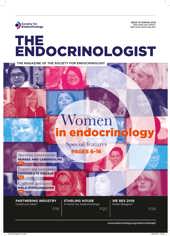The culture and environment at academic conferences highlight many of the reasons posited for the gradual attrition of women from science: the ‘leaky pipeline’. Conferences are important for academics and clinicians to share research, network and increase visibility. Recent research has demonstrated that scientists who attend conferences are more likely to co-author papers.1 Personal, face-to-face communication still matters, still sparks ideas and fosters collaboration. This has clear implications for people, often women, who feel unable to travel because of caring commitments.
The types of presenters that audiences see will shape the conclusions they draw about who can succeed in a field. Diverse role modelling and mentorship are vital and proven elements to improving representation.2 Selection bias often results in women being disproportionately underselected for plenaries or as expert opinion leaders, a phenomenon that is magnified when there are fewer women on selection committees.3 Women are also shown in studies to underestimate their future performance or worthiness compared with the self-appraisal of equally qualified men.4 They may not promote themselves as confidently, which probably results in lower visibility at conferences.
THE SfE BES CONFERENCE
All of these issues may also explain an observation that we had made over the years: women seemed to be less likely to participate in questions or discussions at our national annual conference (SfE BES).
There are many reasons for asking a question at a conference session, from curiosity through to proclaiming one’s own standing in a particular field. It seemed to us that women may indeed be less likely to participate in this.
Interestingly, when we mooted this possibility, informally, with our colleagues who attend the conference, many suggested that such a gender gap was not pertinent in endocrinology. After all, the clinical arm has achieved gender parity at consultant grade well before most other medical specialties. The conference itself seems well attended by young researchers and very well gender-balanced.
So, we decided to examine all the questions that were asked at SfE BES 2017 in Harrogate. We directly observed or accessed recordings of all the sessions at the conference, and studied the audience participation.
OUR OBSERVATIONS
We found there were clear differences in the ways in which women and men engaged with speakers. Women asked fewer and shorter questions regardless of the age or the proportion of women in the room. Overall, the sessions were gender-balanced in terms of audience numbers of men and women. Yet, across more than 200 instances of audience questions or comments, only 21% came from women.
Questions were more likely from older men and women, reflecting an increasing confidence with age and seniority. However, even in the career development sessions, which were heavily attended by younger women (over 60% of the audience), none of the questioners were female.
It is, of course, well established that men are more represented in senior positions, even in endocrinology (fewer than 20% of endocrinology professors are women), which goes much of the way to explaining why we saw such a skew in the gender of the questioners. However, it is important to highlight that gender imbalances persisted across age and seniority boundaries.
The leaky pipeline or persistent gender gap in publication success is not correcting anywhere near as quickly as should be expected,5 making it unwise to assume that conference participation findings will completely dissipate as the current older generation of male opinion leaders retire.
What else did we observe? Interestingly, qualitative analysis revealed that women were far more likely to raise questions about sexual dimorphism in research findings, a topic upon which research councils are now very focused. They were also less inclined to self-promote, rarely talking about their own accomplishments.
IN CONCLUSION
Our observations suggest that, even in specialties such as endocrinology which have good female representation clinically, gender biases at professional conferences persist and, indeed, may contribute to female attrition up the academic ladder.
This deeply entrenched problem requires redress from many angles, such as reforms in education, mentoring and academic publishing. As a microcosm of the broader academic culture, professional conferences are a particularly important platform for tackling academic diversity. Meaningful actions could include engaging gender balance amongst chairs, encouraging younger delegates to take the first question, encouraging delegates to think of questions in an unpressured way (possibly in advance), ensuring equal numbers of female plenary speakers, orchestrating childcare cover at conferences, and encouraging senior delegates to talk to younger ones.
An interesting finding from the 2017 conference was that the presence of at least one female moderator (Chair) and/or having the opening question come from a woman seemed to increase the likelihood of future questions coming from women in that session. In fact, female participation was doubled by having gender-balanced or female-only moderators compared with male-only moderators at sessions.
We repeated the study at SfE BES 2018 in Glasgow, with the aim of investigating whether changing the make-up of our Chairs and questioners made a difference, and hope to share the results with you in the near future.
It can seem as if overcoming the many different types of bias or disadvantage that lead to the under-representation of women in endocrinology and, indeed, in medicine and the life sciences, is an uphill struggle. However, there do seem to be simple changes we can make personally and institutionally that would make a real difference.
Perhaps, as some of our informal discussions on this topic have suggested, simply raising delegates’ consciousness of the issue is the most important step to take. On that note, thank you for reading!
Vicky Salem, Lizzie Avis and Kevin Murphy, Imperial College London
REFERENCES
- Campos R et al. 2018 Economic Journal 128 995–1018.
- Sambunjak D et al. 2006 JAMA 296 1103–1115.
- Johnson CS et al. 2017 Personality and Social Psychology Bulletin 43 493–507.
- Reuben E et al. 2014 Proceedings of the National Academy of Sciences of the USA 111 4403–4408.
- Holman L et al. 2018 PLoS Biology 16 e2004956.





